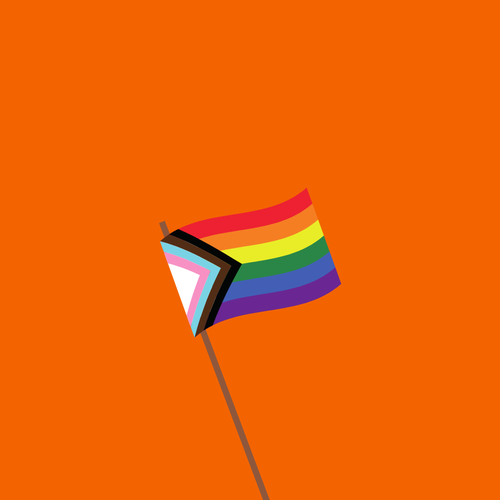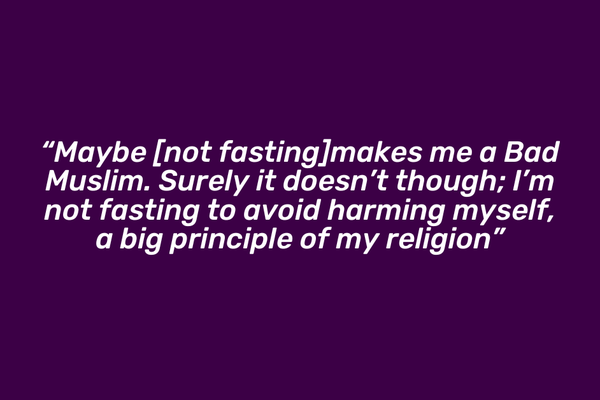
Can you help us change lives this Pride Month?
Your donation can help us provide more vital eating disorder support
Happy Pride!
That’s something it took me a long time to say and to believe in. Pride month is supposed to be a time to celebrate the LGBTQI+ community, diversity, freedom of expression, freedom to be whoever you want to be. Yet for a long time for me, it was a time not of pride but of fear, guilt and shame – emotions that slowly but surely ate away at my sense of self, caused me to bury my true identity, and to starve myself of love, care, and joy.
Like many people who identify as LGBTQI+, I first became aware that I was different from my friends in my early teens. While other guys started to become interest in girls, I frankly struggled to find the appeal! The sense of being different, and the fear growing deep inside like an insidious patch of pitch black mould that I might be that thing that everyone made fun of, that was used to label just about anything deemed uncool or abnormal or wrong, that would mean I wouldn’t fulfil what was expected of a ‘normal’, ‘good’ life – they meant I hid my true self away.
I grew up in as much of a white, heteronormative community as you can imagine. Don’t get me wrong, I had a beautiful childhood and I was happy. But without role models for how to be gay, and with constant bombardment of signals that ‘gay’ was wrong, I felt isolated, ashamed, and scared of who I really was. I remember praying as hard as I could to a god I didn’t even really believe in the blackness of night that I wouldn’t be gay, that I wouldn’t live this ‘bad’ life.
Eventually, I just gave in to the fact that I’d keep the secret hidden, locked away forever.
But the mind doesn’t work like that. Not really. You can only suppress your true self for so long; be exposed to the attrition of gnawing shame, guilt, and fear for so long. I developed coping mechanisms: perfectionism and workaholism to hide the ‘bad person’ I thought I was under a veneer of external success; exerting control over everything I did so as not to reveal the truth within; and never really forming true relationships with anyone to stay safe and because I didn’t think anyone would want to spend time with me.
Those coping mechanisms only worked for so long. When they no longer worked, I searched desperately for some other way to continue to control who I was. I latched on to food and weight. I suppose it makes sense now: perfectionism in work can easily translate to perfectionism in appearance; a need for control could be easily satisfied through controlling what I put in my body and how much of it; the abysmal self-worth and self-hatred meant I could justify not deserving food and punishing myself by not allowing myself certain foods and experiences.
The eating disorder gave me that sense of control I craved. I was addicted to it. What’s more, it numbed my emotions and switched off the hormones that occasionally signalled to me the dark truth I was hiding. The world became monochrome.
Rule One of eating disorders is that they lie. I was not in control – it was. And it consumed me almost entirely.
I was diagnosed with anorexia just after I turned 21 in June 2016. I was in denial that I had a problem for a long time after that. I ignored the advice of my GP and returned to university in late September. I lasted a whole grey autumn month, of which all I remember is being deathly cold and endlessly tired. Within a month, I’d been admitted to hospital.
I would stay in hospital for 10 months. It took me at least 3 months to accept I was ill and to engage with treatment. Remember Rule One of eating disorders? They lie. It made me feel like I couldn’t live without it. But eventually, something clicked. I began to see that rather than it allowing me to control myself and the world, it was controlling me, and it was driving me to a cliff edge.
As I started the long, winding, achingly-slow, slippery path of recovery, I began to realise that I could only truly recover if I finally lifted the lid of the dark, dank cage I’d hidden my true self in so long ago. I came to realise that it was the trauma of denying who I was and of the constant self-inflicting shame and hate that fuelled the eating disorder. I had to starve it of that fuel.
After battling with this realisation for months, I finally felt strong enough to take the petrifying leap. In a grey hospital therapy room under a flat white light, I came out as gay to my family.
I won’t say that it was plain sailing and blue skies after that. I would remain in hospital for another 5 months trying to recover. Even after leaving the ward, recovery had only just begun. But I can trace a turning point, a pivotal moment where momentum tipped more towards recovery than relapse to that moment in that grey room when I finally let my rainbow peak through the cracks.
I went to my first pride while I was still in hospital. It was a challenge set by my treatment team. I was petrified to dip a single toe into those unknown waters, to actively associate myself with a community that for so long I had admired but never believed I would belong to. But when I left that brown brick building and saw technicolour pulsing through the streets of Leeds for the first time, I felt at home.
Trepidation turned to joy. I finally felt a sense of belonging.
I finally felt a sense of pride – I’d made it from the dark into the glittering, shining, light.
I went to that first pride with another friend also receiving treatment on the in-patient ward. It was her first pride too. She was just afraid as I had been before taking that leap of faith. It saddens me beyond words the disproportionate number of people on that ward who identified as LGBTQI+. Members of our community are more than 3 times more likely to develop an eating disorder. While gay men represent just 5 % of the population, they make up an estimated 42% of men with eating disorders.
Today, I feel blessed that I was able to break out of the prison of shame, guilt, fear that I’d built, and that I can live in technicolour as my true self. When I finally returned to complete university a year after leaving hospital, I met a man who I would allow myself to fall in love with and who would make me happier that I ever thought I could be.
And that’s what Pride month is all about. It’s about taking Pride in who we are and how we have come so far to be here. But it should also be about remembering those of us who don’t live under the light of a rainbow, but are still struggling to escape the storm. And it’s about sending messages loud and clear that they are welcome when they are ready to be who they really are.
It’s a shameful, sad fact that LGBTQI+ people still disproportionately experience eating disorders. Until everyone can taste the rainbow, our work isn’t finished. But the message I hope I can send across today is that there is hope – not at the start of the rainbow. You deserve the get there too.
-Contributed by Thomas
If you've been affected by any of the issues raised in Thomas' story, or are concerned for yourself or a loved one, you can find support and guidance on the help pages of our website.
Help us change lives
Every penny helps us provide vital support to more people affected by eating disorders like Thomas
Your Voice, Your Strength - Your Experiences of Pregnancy or Postpartum and Eating Disorders
15 May 2025Giving you the opportunity to share your experiences of eating disorders and pregnancy or postpartum.
"I used to fast for all the wrong reasons" - Ayisha's Ramadan recovery story
11 March 2024Our supporter Ayisha explores her experiences of navigating Ramadan while in recovery from her eating disorder
"Although it's difficult, you can do it" - Bee's tips for the festive season
11 December 2023Our supporter Bee shares her advice for navigating the festive season with an eating disorder


